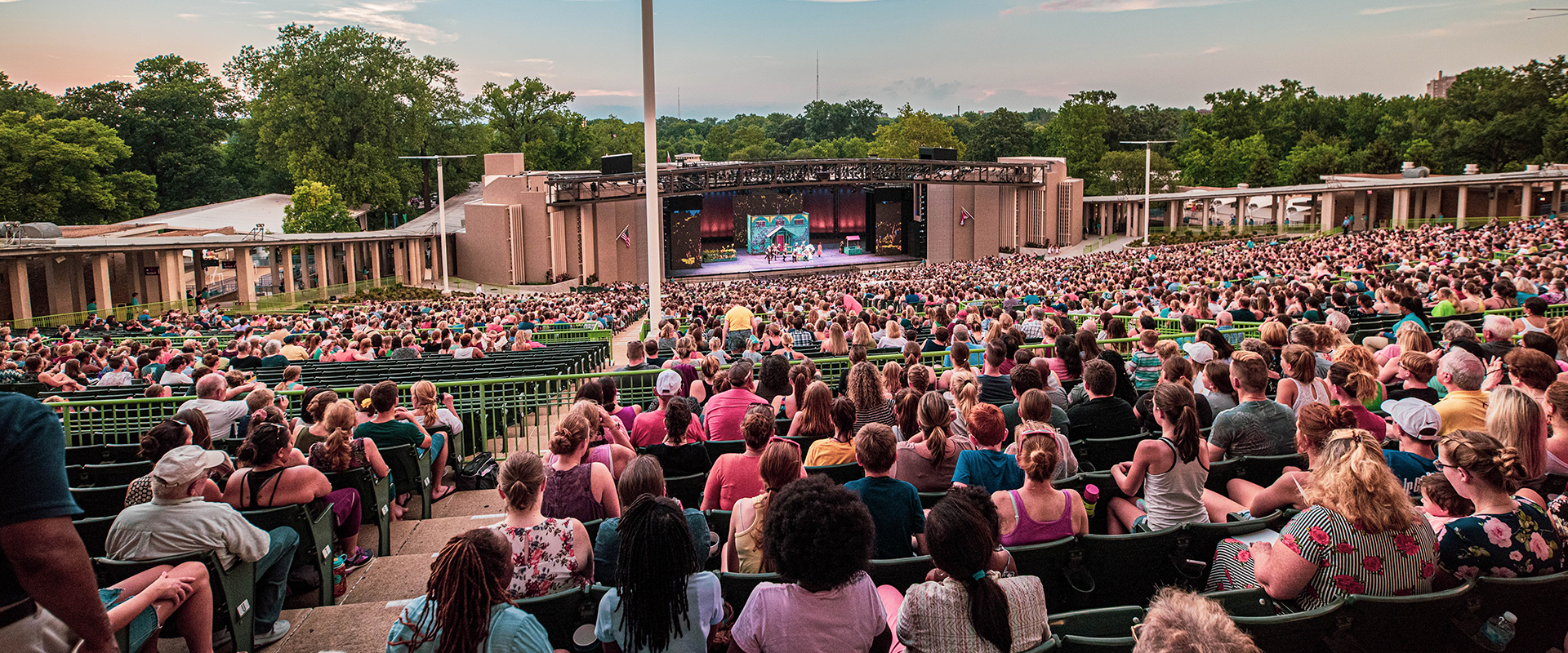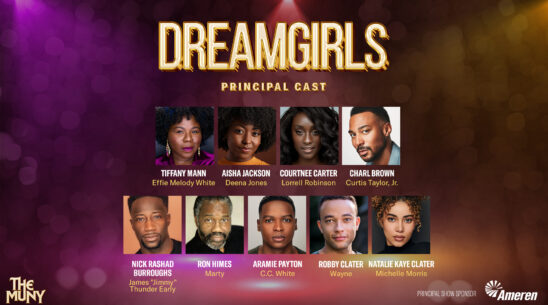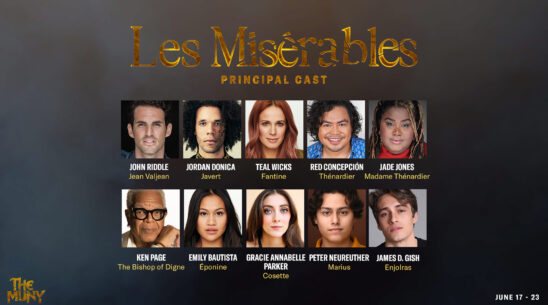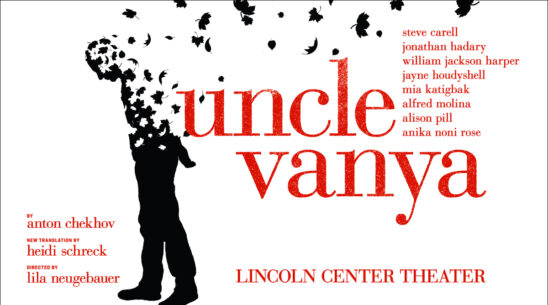Not even WWII keeps the show from going on
by Judith Newmark, St. Louis Post Dispatch
When the Municipal Opera began its third decade in June 1939, peace still prevailed in a nation emerging from the Great Depression. But the conflicts that would turn into World War II were already raging in Europe and Asia, and Americans were worried.
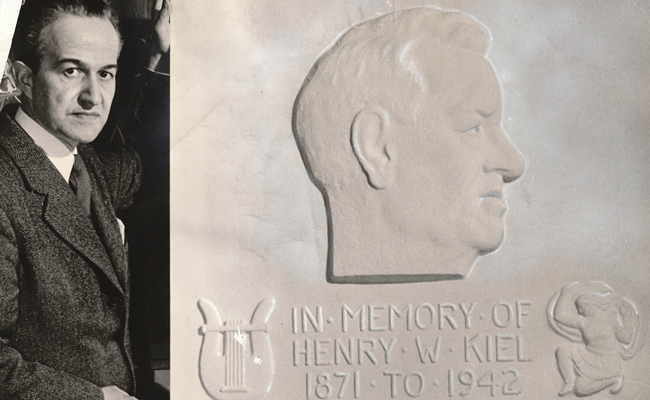
What’s the antidote to worry? How about summer nights watching beautiful shows, bursting with song and dance?
Even before war came to America, the Muny did its bit for morale on the homefront. Once war came, it did more.
Pitching in
The 1940 season greeted an anxious audience with an immense patriotic spectacle, “The American Way,” by Kaufman and Hart. With a cast of 250, 20 sets and more than 3,000 costumes, the play traced the lives of a German immigrant family through three generations. Not enough? The Muny also added a prologue, “Ballad for Americans,” sung by the full ensemble.
But once war was declared, the Muny planned more practical help. When “Show Boat” played to an overflow crowd in 1942, an entertaining preshow rally raised a lot of money for the war effort. Gross proceeds, about $7,600, were turned over to the Army and Navy Relief funds, which members of the Muny staff sweetened with $2,000 more. Union members donated their services to the big show, broadcast to servicemen around the world.
Then members of the cast stepped forward to sell war bonds and stamps. Prima donna Gladys Baxter offered a kiss to any man who bought a $1,000 bond — and got two takers, Carl Schweinfurth of Mount Vernon, Ill., and Parker H. Woods, a member of the Muny board of directors. The stamps and bonds brought in another $35,000.
All told, that came to about $44,600. Adjusted for inflation, that’s around $695,000. Plus, “Old Man River.”
Must the show go on? In St. Louis it must
“Many a summer entertainment project has given up the ghost in this year of war emergency, tire rationing and daylight saving time,” read a Post-Dispatch editorial in June 1942. “The opera’s board of directors had a hard decision to make. ... They were undoubtedly right [to continue] ... this summer [St. Louisans] need hours of relaxation and delight more than ever.” The Muny pushed its starting time to 8:45 p.m., so it would be dark.
Silver anniversary, gray shadows
1943 marked the theater’s 25th season, but the opening took place “even more quietly than last year, when the stress of wartime required some curtailment of carnival spirit,” wrote Post-Dispatch theater critic Colvin McPherson.
In the war years, shows seemed to take on new resonance. “Balalaika,” a folkloric operetta, “represents an ally nation, Russia,” the Post-Dispatch reported. “The Red Mill” featured the antics of Americans “beating their way across a Europe not yet infected by Hitlerism.” As for Vincent Youmans’ Navy musical “Hit the Deck,” that one spoke for itself.
In the house
The 1940 production of “The Great Waltz,” which broke attendance records, flirted with catastrophe: The opening night was rained out. The Muny, in an extraordinary move, immediately scheduled an extra midnight show on Saturday — after the regular show. Bus and streetcar lines put on extra vehicles for theatergoers eager to hear “The Blue Danube,” even in the middle of the night.
When “The Great Waltz” played again, it was just as popular. The performance on July 17, 1943, broke attendance records: 11,407 theatergoers came to the show, filling all the seats, 300 extra chairs and every spot on the grass.
Many of those Strauss fans were in uniform. During the war, the Muny reserved 1,000 seats each night for members of the armed forces, free of charge.
Add that to the free seats at the top of the theater and the donations of seats to orphans, the blind and social service organizations: It’s a lot of seats. By one estimate, a quarter of the Muny wartime audience attended free of charge.
But not all the servicemen were on the far side of the lights. Pvt. John Tyers, a baritone, starred in “Good News,” courtesy of the U.S. Army, just after he appeared in the Army Air Force show on Broadway, “Winged Victory.” Sgt. Joseph C. Cochran, a young veteran of the New York stage, appeared at the Muny, too.
Chorus lines
In May 1941, only 62 young women tried out for 26 spots in the dance chorus. And Paul Beisman, the Muny’s longtime manager, knew why.
Fondly recalling past seasons in which 300 or 400 hopefuls auditioned, Beisman said that many young women had gone to work in the defense industry or had started training to be nurses. Not only were they serving their country, they were making more money than $30 a week, a Muny chorus girl’s pay.
Still, it was a fun summer job that hinted at wider prospects. Look at St. Louisan Virginia Gorski, a chorus dancer who became a Muny leading lady. She changed her name to Virginia Gibson and went on to a career on Broadway and in Hollywood. It had definite appeal.
Post-Dispatch reporter Virginia Irwin — soon to become the paper’s war correspondent in Europe — conducted her own unscientific study of the young women who snagged those chorus jobs.
She reported that the average Muny chorus girl liked to listen to Glenn Miller and Kay Kaiser, went to a beauty parlor once a week, read one book a month and wore a size 14. (Sizing was different then.)
She didn’t get enough sleep, and she worked like a mule, rehearsing six hours a day and performing at night. Roués to tempt her with minks and diamonds were unknown at the Muny stage door.
“Listen,” one chorus girl told Irwin, “we’re just a bunch of ordinary babes.”
One week’s work
When one of the biggest stars in the country, Eddie Cantor, saw a show at the Muny, he was amazed that such a polished production could come together in just a week. Famed Broadway director John Murray Anderson, observing rehearsals for the world premiere of “Auld Lang Syne,” said what the Muny accomplished in four days would take four weeks in New York. Composer Rudolf Friml, on hand for his operetta “The Firefly,” was also impressed: “Even the moon collaborated.”
The work they admired took long, long hours that culminated in a weekly torture session: the all-night dress rehearsal.
“Very often nothing goes right,” wrote Post-Dispatch critic Myles Standish, “and the weary staff of production manager John Kennedy gazes with heavy, jaundiced eyes on the stage. ... But somehow or other everything seems to fall into place and magically click on opening night.”
Kennedy himself harbored doubts. “We simply don’t have time to perfect a show,” he told Standish. Nevertheless, “the customers seem satisfied if they like only one or two things in a show — the scenery, say, or the big dance number. ... That makes up for a lot of difficulties.”
In 1948, one of the singers in the chorus, Roland Earsom, organized daybreak worship services to follow those all-night sessions. An ordained minister, Earsom was concerned that the heavy rehearsal schedule kept many members of the chorus from church on Sunday. The Muny was also used for massive Easter sunrise services.
Program notables
In a break from the war news, Muny performers continued to fill the pages of the Post-Dispatch with stories about their hobbies, their private lives and, sometimes, their careers. Even the pseudonymous advice columnist Martha Carr fielded questions about leading man Lansing Hatfield: How old is he? Can I get his picture? Is he married?
Since soprano Rosemarie Brancato grew up in nearby Kansas City, her mother came to the Muny when she starred in “The Firefly.” She told Virginia Irwin, of the Post-Dispatch, that she loved it — but she told her in Italian. Though she’d lived in America nearly 40 years, Madalena Brancato never needed English in KC’s “Italian quarter.” The star and her sister played translator.
Like many brides in the years of rationing, Muny soprano Wilma Spence wore a tailored suit and a huge corsage when she and William D. Levin got married at the University City home of a friend. Soprano Martha Errolle — described in the Post-Dispatch as “tall, chic and a looker” — married St. Louis assistant circuit attorney William E. Gallagher at the Missouri Athletic Club. They met at a Muny cast party.
It was especially thrilling when Muny performers were actually from St. Louis. Actor Vincent Price starred in that epic production of “The American Way.” Comedian Mary Wickes, a Washington University alumna who performed with the Little Theatre here in her student days, starred in “No, No, Nanette.”
And Helena Bliss — nee Helen Lipp of Clayton, who once told an elementary school teacher that she wanted to be “a prima donna of the Municipal Opera” — fulfilled her childhood dream. In 1943 alone, she played starring roles in “Rose Marie,” “The Desert Song,” “Babes in Toyland” and “The Merry Widow.” Bliss went on to a long musical career in New York and London.
Edward Roecker, another star of the era, lived in New Jersey. But he appeared here so often, and in such romantic roles (leading man in “The Vagabond King,” “The New Moon,” “The Desert Song,” etc.), that he acquired a following. About 25 teenage girls from all over town formed the Eddie Roecker Fan Club.
During the Muny season, Roecker, his wife and their children lived at the Gatesworth Hotel near Forest Park. The Roeckers hosted the fan club at an annual party at the hotel. Avid Muny-goers, the girls also picnicked in Forest Park and sometimes even got to watch rehearsals.
“It was a different world then,” recalled one of the club members, Rosetta Drucker Weintraub. “Teenage girls could take a bus to the door of the Muny and return after midnight with no fear about safety.”
Music, music, music
The Muny began its third decade with a promise of new and improved musical performances. The 1939 season would emphasize musical quality, rather than comedy or specialty acts.
The musicians in the pit were not a problem; nearly all of them played with the St. Louis Symphony Orchestra. Maybe it was the material.
“Heeding the persistent clamor for ‘real operetta,’ the repertory committee has selected 10 [out of 12] shows which make heavy vocal requirements,” the Post-Dispatch reported. “Actual singing ability will be a more stringent requirement.”
That must have pleased Muny-goers like Elaine Erickson, who complained about Jerome Kern’s “Sunny” in a letter to the editor. “If such acts must exist,” she asked tartly, “then why not book them at the burlesque houses?”
But the “real operetta” craze didn’t last long. In 1942, productions manager Richard Berger promised more productions “in the modern tempo — livelier and more rhythmical.” The 1940s brought a number of debuts to Forest Park, including the American premiere of the big London hit “The Dancing Years” and the lavish world premier of “New Orleans” by Sigmund Romberg and Oscar Hammerstein II.
Twinkling toes
Dance complements music, and the 1940s brought a lot of it. Renowned American ballerina Patricia Bowman became a star at the open-air theater. Among other shows, she starred in “On Your Toes,” a Rodgers and Hart musical that, the Post-Dispatch reported, would “virtually satirize her own life’s work.”
For the 1944 revival of “Irene,” the Muny added a ballet treatment of “Alice Blue Gown” — a song that, the Post-Dispatch noted, referred to Teddy Roosevelt’s daughter Alice, and not to her cousin Eleanor, the first lady. Because the show’s shopgirl heroine is named Irene O’Dare and was played by soprano Maureen Cannon, dance director Dan M. Eckley introduced an Irish specialty act for the dance chorus.
When Japanese dancer Yeichi Nimura appeared in “Victoria and Her Hussar,” Post-Dispatch reporter Clarissa Start interviewed him. This was in 1939, a year and a half before Pearl Harbor, and Start never impugned his nationality.
But other prejudices of the era came through. “Male dancers,” she wrote, “are often thought of, in the public mind, as airy, effeminate creatures, trailing perfumed lace handkerchiefs.” She hastened to note that this was not true of the athletic Nimura, a “panther-like ... young Apollo” who spoke perfect English and loved all things American. What the future held for him, who knows.
Press passes
The Post-Dispatch — with a fat annual Municipal Opera section that, according to promotional ads, was “like a trip backstage” — covered the theater in great detail. KSD, the radio station that, along with the Post-Dispatch, was owned by Pulitzer Inc., aired a weekly program hosted by Frank Eschen previewing each Muny show. CBS’ KMOX soon came up with its own show, “Stars Over St. Louis.”
When the Muny wasn’t in season, KSD aired a different program, “Echoes of the Municipal Opera,” that featured music from Muny titles. Of course, you could enjoy that any time if you purchased records of your favorite operetta songs at the Aeolian Company of Missouri. According to its ad, the downtown store offered records for 35 cents each or three for $1.
Looking to spend more? Aeolian also ran sales on used pianos — used by stars of the Municipal Opera! But were you able to see those performers? You were if you had opera glasses from Erker’s, another retailer that boasted a Muny tie-in. For its part, the Municipal Opera suggested that season tickets made “an ideal Christmas gift.”
By 1947, KSD and the Post-Dispatch had a new “sister,” KSD-TV (which later became KSDK). Eschen’s program debuted there in July.
The Kiel legacy
In 1942, former St. Louis Mayor Henry Kiel, who led the campaign to open the Forest Park theater and headed its governing board for decades, was too ill to attend the guarantors’ annual dinner. But he delivered a cheery speech by phone, broadcast to the crowd at the Hotel Jefferson.
Kiel died a few months later. The following summer, his 6-year-old great-granddaughter, Donna Lee Barger, unveiled a bronze tablet honoring his contributions to the theater. You can see it outside the box office.
A work in perpetual progress
When “Rose Marie” opened the 1939 Municipal Opera season, theatergoers saw something new: pergolas.
The new structures offer “beauty, dignity, permanence and adequate shelter,” Colvin McPherson wrote, adding that the audience “was impressed almost to the point of bewilderment at the developing magnificence it found.”
Though the lighting fixtures were not yet installed, the covered walkways, McPherson said, signaled “the opera’s coming of age.”
But a world war got in the way.
In 1947, after the war was over, Paul Beisman announced a $400,000 construction proposal. It would include platforms for 200 more seats, a new administration building, orchestra rehearsal rooms, a dressing room, locker rooms, storage space and two more restrooms.
But in the postwar era, housing was in very short supply. The Office of the Housing Expediter refused to issue permits. Materials were so sorely needed to build homes that they couldn’t be wasted on recreational and amusement purposes.
Emphasizing health and safety concerns, the opera appealed to the federal government. The Post-Dispatch editorial page backed the theater’s position.
Arguing that material was plainly going to other uses anyhow, the editorial wondered whether anyone had considered “how much the theater under the stars does to make things tolerable. ... For families cooped up in crowded quarters these hot evenings, the opera must be the very next best thing to a fresh breeze.”
The winds were favorable — and a bigger Muny headed into its fourth decade.
Categories: Muny News
